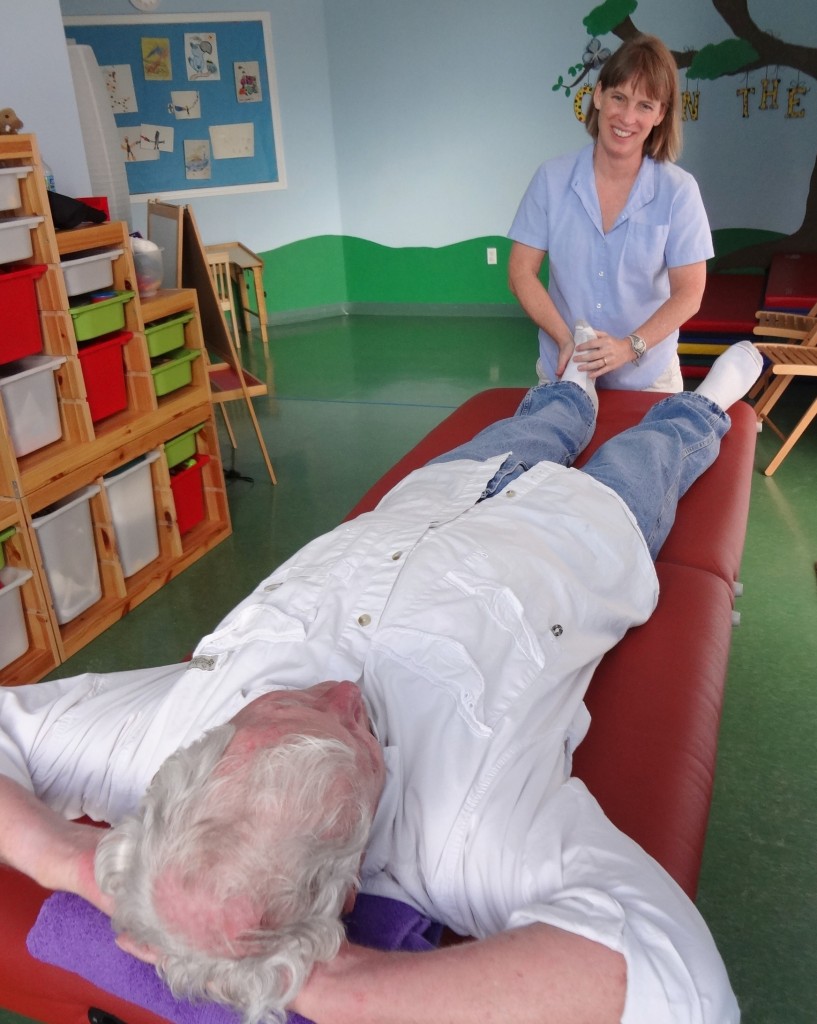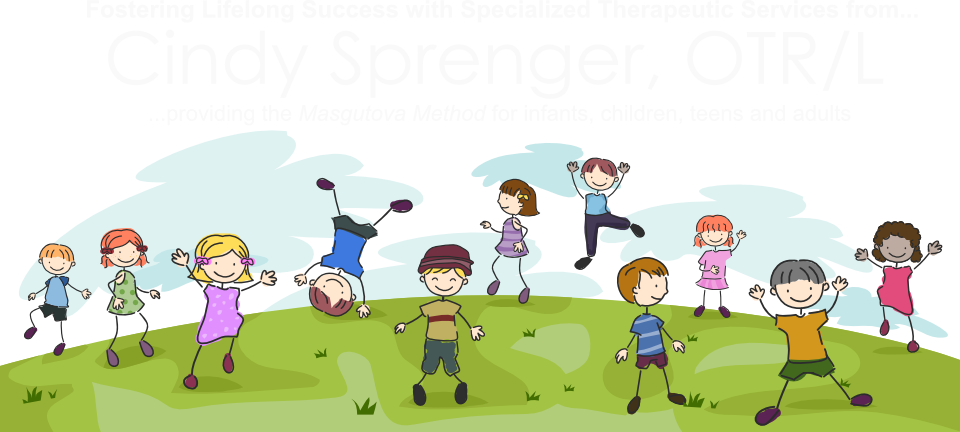The Masgutova Neurosensorimotor Reflex Integration (MNRI®) Method, often referred to as simply “the Masgutova Method“, is a therapeutic technique that uses the body’s own resources to foster development, improve everyday living and enhance life-long skills. Each person has the genetic programming for motor reflex patterns, which are referred to as primary movements by Svetlana Masgutova. The main function of these primary movements is to create and myelinate (strengthen) the nerve network of the brain. This is nature’s way of developing our brain. These primary movements are vital for our protection and survival as well as helping to regulate our bodies. These primary movements trigger the development of our senses. They also help to link our sensory systems together, promoting proper sensory integration. Primary movements are the source of sensori-motor and whole brain development, which are the foundation for learning.
A primary reflex, also known as a primitive reflex, consists of a three part circuit: 1) sensory stimulation, 2) brain processing and 3) motor response. Errors can occur in this three part circuit. If a problem occurs, then maturation and integration of this reflex will not take place. This causes the nerve network of the brain to be underdeveloped. The Masgutova Method helps remind the body of this three part circuit, which allows the brain to strengthen its connections. When implementing the Masgutova Method, I provide sensory stimulation for a reflex pattern and follow that immediately with the correct motor response. Since the unique pairing of a specific stimulation and motor response is genetically coded in our brain, the body recognizes this vital combination, says “I need that” and adopts that reflex pattern as a normal response.
When our reflexes are immature or not functioning properly, the brain causes our body to function in a survival mode. This happens even when there is no immediate danger. When operating in survival mode, your awareness and ability to interact with the world is diminished. This results in a decreased attention span, poor cause & effect thinking, problems with motor skills, anxieties and troublesome behaviors. By using the Masgutova Method to correct the problems with our primitive reflexes, I can help improve skills and thinking, which in turn leads to a happier and more productive life.
The challenges I help address using the Masgutova Method are so diverse. But they generally have a common denominator, which are either inadequate or inappropriate reflex responses and/or patterns. The outward signs and symptoms causing the primary reflexes to be “off” can be extremely diverse.
Here are some examples where I often see improvements using the Masgutova Method:
- Anxiety
- Slow growth (failure to thrive)
- Autism and Autistic Spectrum Disorders
- ADD and ADHD
- Academic underperformance
- Sensory integration and processing issues
- Speech delays
- Gross and Fine motor skill problems
- Auditory processing issues
- Social skills and behavioral problems
- Excessive crying and fussiness
Also, damage to the nervous system can be rehabilitated by using the Masgutova Method. These types of situations include:
- Stroke
- Head injury
- Dementia
- Seizures
- Multiple Sclerosis
- Parkinson’s disease
Other conditions that frequently go hand in hand with having poorly developed reflexes are:
- Cerebral Palsy
- Genetic disorders including:
- Down syndrome
- Noonan syndrome
- Rett syndrome
- Premature and difficult births
- Chronic illnesses
- Jaw tightness and teeth grinding
Underdeveloped reflexes are an indication of an underdeveloped or stressed nervous system. Some common issues by age group are:
Infants
- Difficult births
- Premature births
- Fussy babies
- Drug-exposed babies
- Failure to thrive
Children
- Delayed acquisition of developmental milestones including:
- Gross motor skills
- Fine motor skills

- Speech delays
- Visual-motor coordination
- Sensory processing & integration problems
- Attention Deficit and Hyperactivity
- Social & emotional behaviors
- Academic problems or underachievement
- Trouble following directions
- Asthma and breathing issues
- Failure to thrive & growth issues
Teens
- Social skill problems
- Academic performance issues
- Difficulty reading or focusing
- Trouble following directions
Adults
- Anxiety
- Jaw tightness, clenching and tooth grinding
- Multiple Sclerosis
Elderly
- Dementia
- Strokes
- Balance problems
